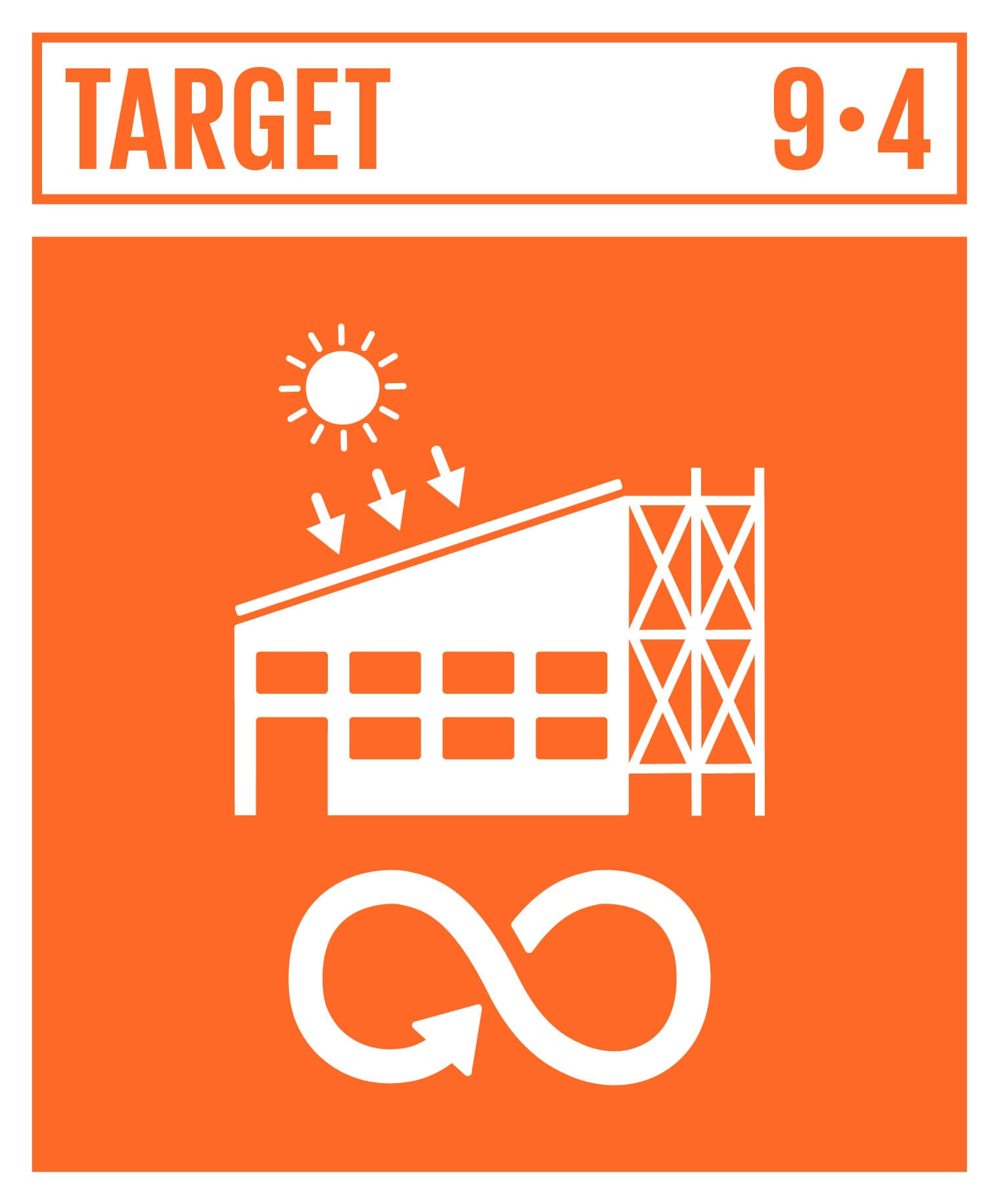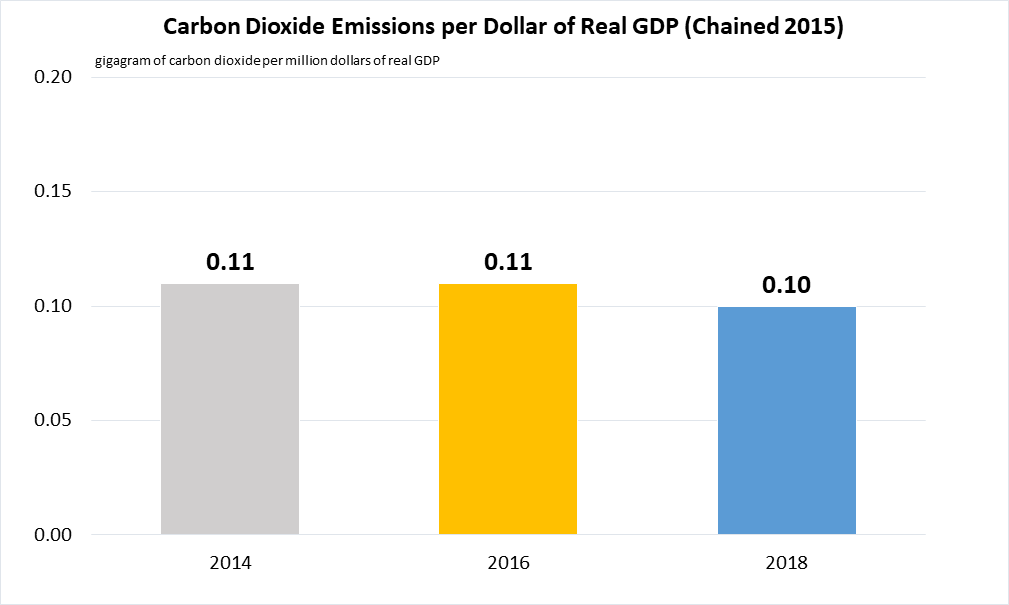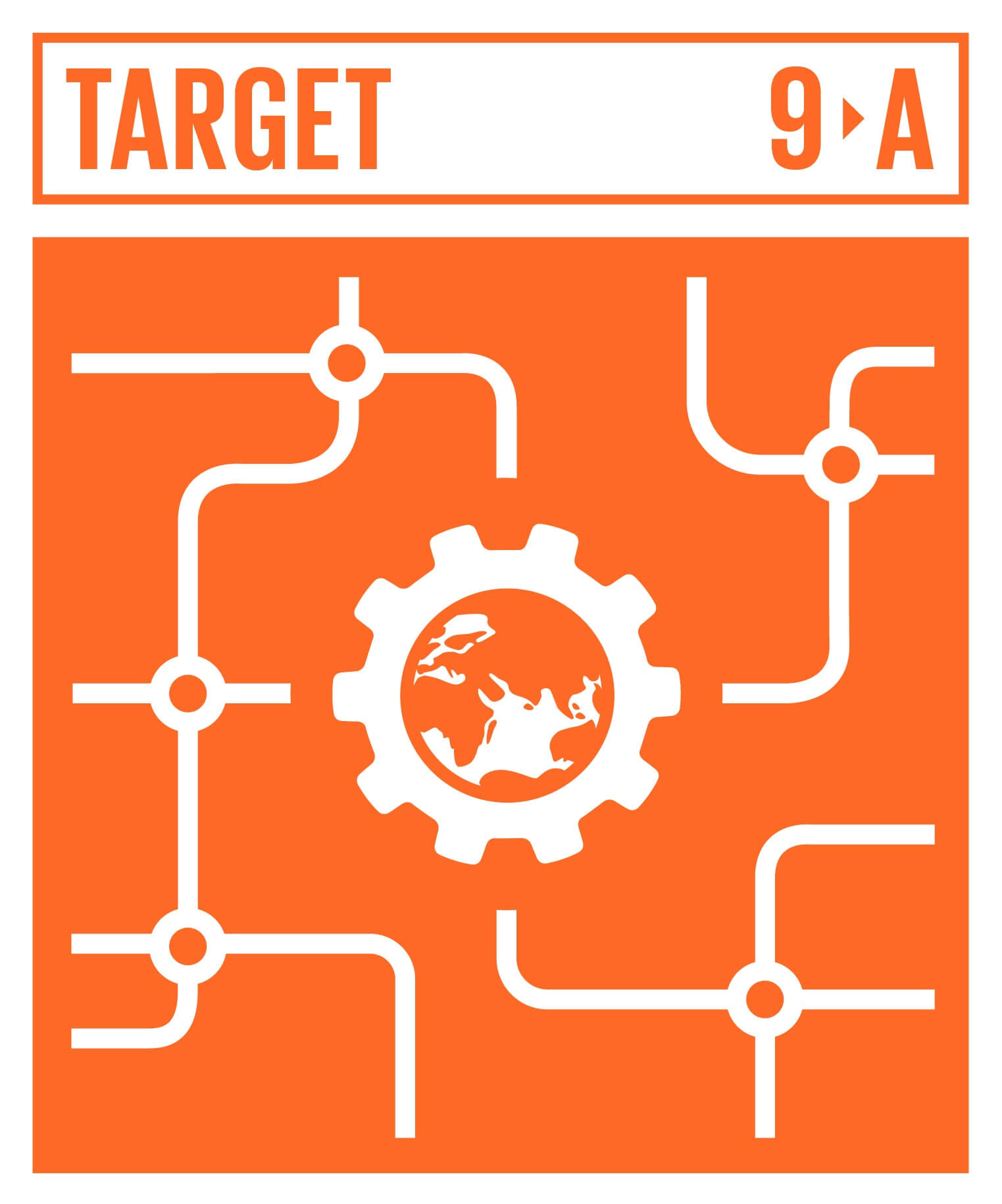Sustainable Development Goals
Targets and Indicators with Data Availability
Note: The data may be updated periodically as more information become available.
 |
Develop Sustainable, Resilient and Inclusive Infrastructures
Develop quality, reliable, sustainable and resilient infrastructure, including regional and transborder infrastructure, to support economic development and human well-being, with a focus on affordable and equitable access for all.
|
Indicator 9.1.1 | Proportion of the rural population who live within 2 km of an all-season road
|
Not applicable as Singapore is a city state.
|
|
Indicator 9.1.2 | Passenger and freight volumes, by mode of transport
|
(ai)

Data refer to arrival and departure passengers in Singapore Changi Airport only.
(aii)

Data refer to total volume of cargo loaded and unloaded in Singapore Changi Airport only.
(bi)

Data refer to daily number of journeys by passengers on private vehicles, taxis, private hire cars and buses.
Note: 2021 and 2022 data are affected by Covid-19. As such, it might not be representative of a Business as Usual (BAU) scenario.
Data prior to 2021 are available every 4-5 years.
(ci)

Data refer to average daily ridership by rail (Rapid Transit Network), comprising Mass Rapid Transit (MRT) and Light Rapid Transit (LRT), measured in terms of number of passenger-trips in thousands.
(cii) The indicator for freight volumes by rail is not applicable as Singapore does not handle any rail cargo.
(dii) The indicator for freight volumes by inland waterways is not applicable to Singapore as Singapore does not carry freight volumes by inland waterways.
(ei)

(eii)

Data refer to the total volume of cargo loaded and unloaded at the Port of Singapore. The data include transhipment cargo.
(jii)

Data refer to the total number of container loaded and unloaded at the Port of Singapore, measured in Twenty-foot Equivalent Units (TEU). Data include transhipment containers.
|
 |
 |
Promote Inclusive and Sustainable Industrialization
Promote inclusive and sustainable industrialization and, by 2030, significantly raise industry’s share of employment and gross domestic product, in line with national circumstances, and double its share in least developed countries.
|
Indicator 9.2.1 | Manufacturing value added as a proportion of GDP and per capita
|
(a)

Data refer to the manufacturing share of GDP (%).
(b)

Data refer to the manufacturing value added per capita in chained (2015) dollars (US dollars), using constant 2015 USD-SGD exchange rate.
|
 |
Indicator 9.2.2 | Manufacturing employment as a proportion of total employment

Data are primarily from administrative records, with the self-employed component estimated from the Labour Force Survey.
|
 |
 |
Increase Access to Financial Services and Markets
Increase the access of small-scale industrial and other enterprises, in particular in developing countries, to financial services, including affordable credit, and their integration into value chains and markets.
|
Indicator 9.3.1 | Proportion of small-scale industries in total industry value added
|

Small-scale industries are defined as manufacturing establishments with less than 20 workers.
|
|
 |
 |
Upgrade all Industries and Infrastrutures for Sustainability
By 2030, upgrade infrastructure and retrofit industries to make them sustainable, with increased resource-use efficiency and greater adoption of clean and environmentally sound technologies and industrial processes, with all countries taking action in accordance with their respective capabilities.
|
Indicator 9.4.1 | CO2 emission per unit of value added
|

Data on carbon dioxide (CO2) emissions from fuel combustion (Gg CO2) per dollar of real GDP (chained 2015).
|
|
 |
Enhance Research and Upgrade Industrial Technologies
Enhance scientific research, upgrade the technological capabilities of industrial sectors in all countries, in particular developing countries, including, by 2030, encouraging innovation and substantially increasing the number of research and development workers per 1 million people and public and private research and development spending.
|
Indicator 9.5.1 | Research and development expenditure as a proportion of GDP
Indicator 9.5.2 | Researchers (in full-time equivalent) per million inhabitants
 |
Facilitate Sustainable Infrastructure Development for Developing Countries
Facilitate sustainable and resilient infrastructure development in developing countries through enhanced financial, technological and technical support to African countries, least developed countries, landlocked developing countries and small island developing States.
|
Indicator 9.A.1 | Total official international support (official development assistance plus other official flows) to infrastructure
|
Not applicable. Singapore does not receive Official Development Assistance.
|
|
 |
Support Domestic Technology Development and Industrial Diversification
Support domestic technology development, research and innovation in developing countries, including by ensuring a conducive policy environment for, inter alia, industrial diversification and value addition to commodities.
|
Indicator 9.B.1 | Proportion of medium and high-tech industry value added in total value added
|

Data are taken from United Nations SDG Global Database. Medium and high-tech industries refer to manufacturing industries as defined by the United Nations Industrial Development Organisation (UNIDO) based on the International Standard Industrial Classification of All Economic Activities (ISIC) Revision 4 codes: 20, 21, 252, 26, 27, 28, 29, 30 (excluding 301) and 325.
|
 |
 |
Universal Access to Information and Communications Technology
Significantly increase access to information and communications technology and strive to provide universal and affordable access to the Internet in least developed countries by 2020.
|
Indicator 9.C.1 | Proportion of population covered by a mobile network, by technology
|
Proportion of population covered by at least a 2G, 3G and 4G mobile network is 100% respectively.
|
 |